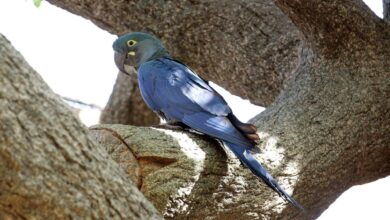2021 and the Preservation of Life in Forests
This year, the theme selected for the celebration of World Wildlife Day was Forests and Livelihoods: Sustaining People and Planet because of the vital part that forests, their wildlife, and ecosystems have in the world.

The Woman Post | Catalina Mejía
Listen to this article
The ecosystems are the livelihoods of millions of people around the world and especially those of indigenous communities that are deeply rooted in forests not only for their ecosystem services but also for their beliefs and the different rituals that are carried out there. This year's theme is deeply related to the UN SDGs 1, 12, 13, and 15 and their fidelity towards alleviating poverty, ensuring the sustainable use of resources, and the preservation of life on earth.
It is worth mentioning that on December 20, 2013, the United Nations General Assembly designated March 3 as the signing day of the Convention on International Trade in Endangered Species of Wild Fauna and Flora in 1973. The main purpose of this day is to celebrate and raise awareness about the importance of the world's wild plants and animals. The UNGA resolution designated the CITES Secretariat as the coordinator of the global commitment to celebrate this extraordinary date.
In fact, approximately 200-300 million people live within or very close to forest ecosystems in the world, which means that the aforementioned population is highly dependent on the ecosystem services of forests and the species that inhabit them to survive and satisfy their needs of food, water, medicine, and shelter.
Also read: HOW TO CONTRIBUTE TO PROTECT THE BIRDS THAT LIVE IN OUR CITIES
The indigenous population of Latin America is made up of approximately 50 million people, who come from 500 different ethnic groups. The largest indigenous populations are found in Mexico, Peru, Guatemala, and Bolivia. In terms of the region, the indigenous population represents approximately 8% of the population. According to UNDP Latin America and the Caribbean, material poverty is present in 43% of indigenous households in Latin America. In addition, they have less access to health services, shorter life expectancy and higher infant mortality. The United Nations has warned about the great difficulty in eradicating epidemiological diseases among these populations, particularly tuberculosis.
Due to the difficult conditions indigenous communities live in, including the loss of wildlife, climate change, and the COVID-19 pandemic, it seems like a good time to reflect on the importance of forests and livelihoods. The newly contacted communities have suffered from a contact epidemic, which is also exacerbated by other diseases such as tuberculosis. Many countries such as Argentina, Peru, and Ecuador have imposed measures to restrict access to areas where indigenous communities live. However, strict compliance with these measures is difficult to achieve, as these populations move daily to work and survive. The indigenous population remains unprotected not only in terms of health but in their economies as they are low-skilled workers and generally do not have stable jobs.
Let's not forget to celebrate World Wildlife Day by honoring our planet's wild fauna and flora by reducing the carbon footprint in our daily activities, preferring low-carbon transport, eating less industrially produced food, reducing food waste, recycling, preserving wildlife habitats, keeping our cats indoors, cultivating our own gardens and orchards, supporting and respecting our indigenous communities, and avoiding the use of towels or tissues to clean our homes.




